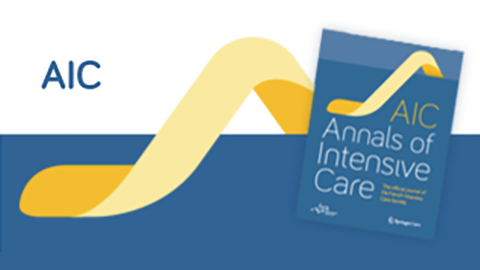03/02/2016


Source
Abstract
Background
To evaluate the ability of the central venous-to-arterial CO_2 content and tension differences to arteriovenous oxygen content difference ratios (∆ContCO_2/∆ContO_2 and ∆PCO_2/∆ContO_2, respectively), blood lactate concentration, and central venous oxygen saturation (ScvO_2) to detect the presence of global anaerobic metabolism through the increase in oxygen consumption (VO_2) after an acute increase in oxygen supply (DO_2) induced by volume expansion (VO_2/DO_2 dependence)Methods
We prospectively studied 98 critically ill mechanically ventilated patients in whom a fluid challenge was decided due to acute circulatory failure related to septic shock. Before and after volume expansion (500 mL of colloid solution), we measured cardiac index, VO_2, DO_2, ∆ContCO_2/∆ContO_2 and ∆PCO_2/∆ContO_2 ratios, lactate, and ScvO_2. Fluid-responders were defined as a ≥15 % increase in cardiac index. Areas under the receiver operating characteristic curves (AUC) were determined for these variablesResults
Fifty-one patients were fluid-responders (52 %). DO_2 increased significantly (31 ± 12 %) in these patients. An increase in VO_2 ≥ 15 % (“VO_2-responders”) concurrently occurred in 57 % of the 51 fluid-responders (45 ± 16 %). Compared with VO_2-non-responders, VO_2-responders were characterized by higher lactate levels and higher ∆ContCO_2/∆ContO_2 and ∆PCO_2/∆ContO_2 ratios. At baseline, lactate predicted a fluid-induced increase in VO_2 ≥ 15 % with AUC of 0.745. Baseline ∆ContCO_2/∆ContO_2 and ∆PCO_2/∆ContO_2 ratios predicted an increase of VO_2 ≥ 15 % with AUCs of 0.965 and 0.962, respectively. Baseline ScvO_2 was not able to predict an increase of VO_2 ≥ 15 % (AUC = 0.624)Conclusions
∆ContCO_2/∆ContO_2 and ∆PCO_2/∆ContO_2 ratios are more reliable markers of global anaerobic metabolism than lactate. ScvO_2 failed to predict the presence of global tissue hypoxia.Liens article
©2016 Mallat et al.